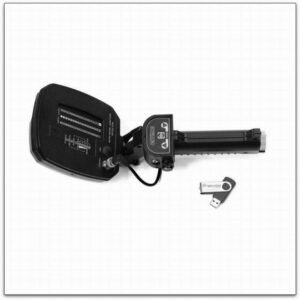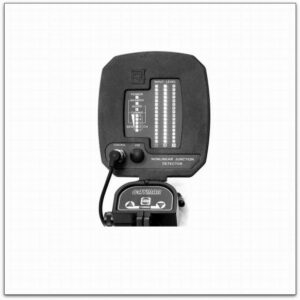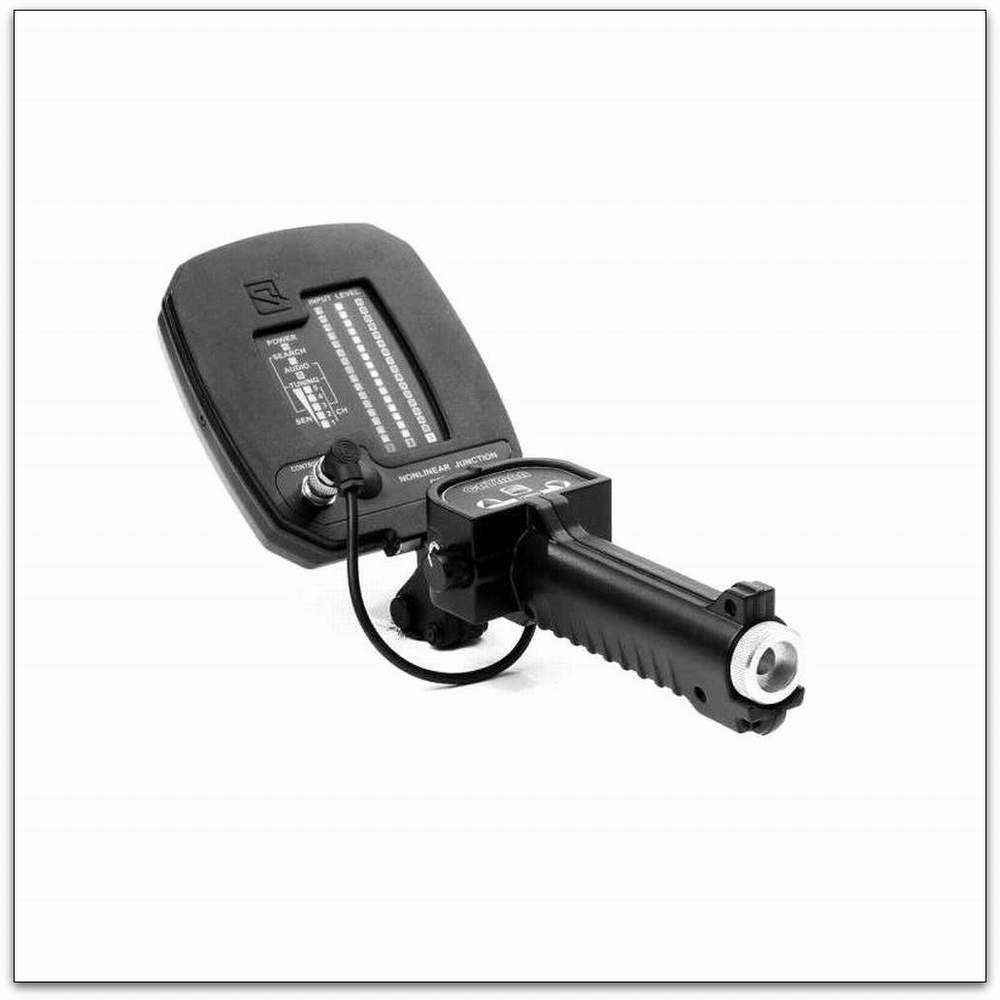Opis










Non-linear junction detector ST 403 CAYMAN is a portable modification of the basic model NLJD ST 402. Thus ST 403 retained all modes implemented in the basic model. The main difference from the basic model, is the lack of a telescopic rod. ST 403 is especially useful when working in a confined space when checking small loads, mail, as well as screening people. ST 403 allows you to detect, turned on and turning off electronic devices, as well as pinpoint their placement. Using the detector, the operator can distinguish between “feedback” from the real semiconductors “false” signals (corrosion, metal structure, metal-oxide-metal).
Features:
Ergonomic design
Maximum peak radiated output power does not exceed 2W
An original signals algorithm reduces false positives , increase selectivity and reaction rate
The range of the receiver gain is 40dB (five steps to 8dB)
Having to listen to audio mode demodulated signals
Time of continuous operation from a fully charged battery from 3 to 4 hours
Adjustable tilt antenna module of the instrument
4 standard battery and charger
Software update via port USB
Locator comes in a shockproof case
Package contents:
ST 403 CAYMAN non-linear junction detector – 1 pc
Li-ion rechargeable batteries 3,7 V (type 18650) – 4 pcs
Charging unit – 1 pc
A cable for charging unit – 1 pc
Headphones – 1 pc
Test targets – 2 pcs
Operation manual – 1 pc
Transportation shockproof package – 1 pc
Characteristics:
Frequency range: 2-3Ghz
The maximum radiated peak power: ess than 2W
Antenna: elliptic
Operating modes: “search”, “audio”, “adaptation”
The range of sensitivity adjustment in manual mode: 40 dB (5 steps of 8dB each)
Indication:
– visual: three 16 LEDs bars
– audible: built-in speaker, headphones
Power supply: Li-ion 3.7V rechargeble battery (18650 type)
Run time of a fully charged battery: 3 to 4 hours (depending on the operating mode)
Charge time: not more than 3 hours
Operating conditions:
– temperature: +5Co…+40Co
– humidity: up to 85% (under +25Co)
Weight with battery: 0.85kg
Dimentions: 340x130x160mm
Weight of the full set: 3.7kg
Non Linear Junction Detectors:
In 1970s Americans detected wires in the concrete columns of the American Embassy in Moscow. The bugs were installed during the construction of the building, and there was no other way to extract them except for complete destruction of the building. One shouldn’t neglect the importance of correct frequency tuning of NLJD equipment for different types of search environment (for instance, concrete walls). Bugs or wires (as covert listening devices are commonly called) can be set up deep in concrete columns and they still will be transmitting signals. Non-linear junction detectors (NLJD) are devices designed for search and detection of different types of covert listening devices, various electronic appliances and transmitters comprising of semiconductors. The principle of NLJD equipment operation is based on emission of high radio frequency energy in an area. Detectors have a sensitive receiver designated for reception of objects’ echo signals which, for operator’s convenience, are marked down with sound or displayed on graphical user’s interface. Depending on the model, non-linear junction detectors are capable of detecting almost any electronic appliance in any operational mode: active, stand-by, switch-off. The designation of such devices consists in detection of radio microphones, microphone amplifiers, dictophones in premises (walls, floors, ceilings, furniture, etc.). Non-linear junction detectors acquired a reputation as perfect means of counter-espionage, as embassies and other diplomatic posts are known to be most popular targets for eavesdropping equipment. Specific models of NLJD are used by the police in search for weapons during events involving great masses of people. Detectors are used for providing location secure from covert listening devices in different organizations. Non-linear junction detectors can serve multiple purposes and have a wide range of implementation, starting from ground detectors up to equipment used for detection of mobile phones. Wide range of NLJD is presupposed by the type of material or surface for search operations – ground detectors are preferable for object detection in soil, portable detectors tuned to appropriate frequency are better in search within wooden furniture. Non-linear junction detectors have a very peculiar designation, therefore their usage is conditioned by goals set by customers. Taking into account great variety of NLJD equipment there is a specific model for any purpose you may require. Current NLJD products line include models for various applications.
Why Non Linear Junction Detectors?
NLJD technology has proven to be most effective in detection of semiconductors containing multiple layers of silicon, a P-Type and an N-Type. The point where they meet is called a Non Linear Junction.Non Linear Junction also appears in nature: dissimilar metals in contact with one another; the rust on metals resulting from corrosion.





